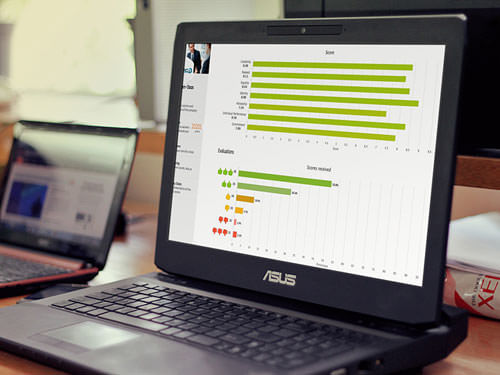Transcript of ESBHR Podcast #21: New Hire Checklist – An Onboarding Best Practice
Listen to the audio.
Let’s go over a new hire checklist and pre-orientation plan for your new hire.

Working on improving employee engagement?
EPIC is an Employee Engagement software that gives you the tools and insights to create a workplace culture that encourages engagement, loyalty, and trust.
The new hire checklist is a tool that you can use to ensure that you don’t miss any important paperwork relating to your new employee and to ensure that your employee gets the information that they need on their first few days of working with you.
Your new hire check list is essentially just a quick list of steps or actions that you’ll need to take with your new employee or a list of forms that need to be completed. Some of these steps or forms may include:
1. Creating a folder or file for the new employee: You’ll want to include a job application if required and a resume, along with any other pertinent paperwork.
2. Have the employee complete new hire paperwork. For those in the U.S., this will include federal and state tax forms and Employment Eligibility Verification form, (also known as an I-9). It may also include the review and signing of any forms that are specific to your company. For my overseas listeners, you’ll want to be sure to find out from the appropriate agencies if there is paperwork that you are required to keep for new employees.
3. Scheduling the employee for orientation to the company: This may be just an informal one on one with appropriate staff, or a more formal program where several employees are brought up to speed on company policies and benefits.
4. Benefits and policy review: This is often part of an orientation.
Other items should be added to your checklist based on your company culture and policies.
For example, some companies require new employees to go through a background check. Other companies may require pre or post employment physicals.
Whatever steps are important to your company as it relates to the new hire, you should add it to your checklist.
I wish you the best in your hiring efforts.
Free Related Resources
Onboarding – Get better employee outcomes, consistently higher job satisfaction, higher productivity, and lower turnover. Get your Free White Paper.
Dianne Shaddock
Latest posts by Dianne Shaddock (see all)
- Build the Best Team for Your Small Business - November 12, 2019
- Cross Training Staff – Doing the Right Thing For the Wrong Reasons - January 18, 2019
- Proactive Employee Management Really Boils Down To The Basics - December 21, 2015
- Office Meetings Do Not Have To Be A Productivity Time Drain If Done Right - November 17, 2015
- Proposed Changes To Employee Rights Laws: WAGE Act Bill - November 3, 2015



Thanks for your support! My goal is to provide both new and experienced managers with the tips that they need to successfully hire and manage staff.